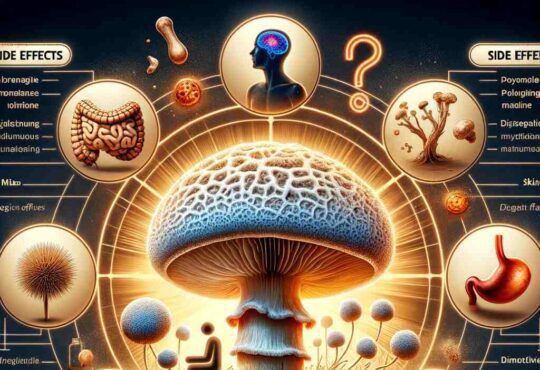Understanding the Risks and Side Effects of Blood Thinners for Elderly Patients: Preserving Vitality
Introduction
Defining blood thinners and their purpose
Blood thinners, also known as anticoagulants, are medications that help prevent blood clot formation in order to reduce the risk of strokes, heart attacks, and other cardiovascular complications. They work by interfering with the clotting process, allowing blood to flow more freely throughout the body.
Significance of comprehending risks and side effects of blood thinners for elderly patients
Comprehending the risks and potential side effects of blood thinners is crucial, particularly for elderly patients, who are often more vulnerable to complications. Understanding these risks can help healthcare providers and patients make informed decisions, ensuring the safe and effective use of these medications.
Importance of Blood Thinners for Elderly Patients
Elucidating the necessity of blood thinners in aging individuals
As individuals age, their risk of developing certain medical conditions, such as atrial fibrillation, deep vein thrombosis, and pulmonary embolism, increases. Blood thinners play a vital role in managing these conditions by preventing clot formation and reducing the likelihood of potentially life-threatening events.

Diseases in older population that necessitate blood thinners
Elderly patients commonly experience age-related cardiovascular diseases, such as coronary artery disease and peripheral arterial disease. These conditions often require blood thinners to prevent blood clots that can lead to heart attack, stroke, or compromised blood circulation to the limbs.
Ensuring vitality preservation through proper use
Proper utilization of blood thinners in elderly patients contributes to their overall vitality and well-being. By effectively managing the risk of clot formation, vitality can be preserved, allowing elderly individuals to maintain an active and healthy lifestyle.
Types of Blood Thinners
Overview of common blood thinners available
There are several types of blood thinners, including aspirin, warfarin, heparin, and direct oral anticoagulants (DOACs). Each of these medications has its own distinct mechanism of action and is prescribed based on the specific needs and medical condition of the patient.
Mechanisms of action and distinctions between various types Blood thinners
work through different mechanisms to prevent clot formation.
While aspirin inhibits platelet aggregation, warfarin interferes with the production of clotting factors. Heparin and DOACs, on the other hand, directly target specific clotting factors to prevent their activation. Understanding these distinctions is crucial for healthcare providers to ensure appropriate medication selection for elderly patients.

Potential Risks Associated with Blood Thinners
Increased risk of bleeding
One of the most significant risks associated with blood thinners is an increased tendency to bleed. As these medications inhibit the formation of blood clots, they can also impair the body’s ability to stop bleeding when necessary. Elderly patients, who may already have fragile blood vessels, are particularly susceptible to this risk.
Hemorrhagic complications and their severity
Hemorrhagic complications, such as gastrointestinal bleeding or bleeding into the brain, can occur in elderly patients on blood thinners. The severity of these complications can range from minor to life-threatening, necessitating careful monitoring and management to minimize harm.
Exploring risk factors for adverse events in elderly patients
Elderly patients may have additional risk factors that increase their susceptibility to adverse events related to blood thinners. Factors such as age-related kidney or liver dysfunction, concomitant medications, and previous history of bleeding disorders should be taken into consideration when prescribing and monitoring blood thinners in this population.

Side Effects of Blood Thinners
There are some side effects of blood thinners which describe below
Gastrointestinal disturbances
Blood thinners can sometimes cause gastrointestinal disturbances, such as stomach discomfort, nausea, or gastric ulcers. Elderly patients may experience these side effects of blood thinners more frequently due to age-related changes in the digestive system.
Dissecting hematological side effects of blood thinners
Some medications can lead to hematological side effects of blood thinners, such as low platelet counts or increased risk of anemia. These side effects of blood thinners can have implications for overall health and vitality in elderly patients, necessitating close monitoring and appropriate management.
Addressing other common side effects of blood thinners
Other potential side effects of blood thinners include bruising, nosebleeds, or unusual bleeding from minor cuts. While these side effects of blood thinners may not pose significant risks on their own, they should still be addressed to ensure the overall safety and well-being of elderly patients.
Interactions of Blood Thinners with Other Medications
Understanding common medications that interact with blood thinners
It is important to be aware of medications that can interact with blood thinners, as these interactions can influence their effectiveness or increase the risk of bleeding. Common examples include nonsteroidal anti-inflammatory drugs (NSAIDs), certain antibiotics, and herbal supplements.
Managing drug interactions to optimize patient safety
Healthcare providers should carefully evaluate all medications, including over-the-counter drugs and supplements, being taken by elderly patients on blood thinners. By managing drug interactions, potential complications can be minimized, and patient safety can be maximized.
Special Considerations for Elderly Patients
Age-related physiological changes and their impact
As individuals age, various physiological changes occur that can impact the side effects of blood thinners and risks associated with blood thinners. These changes include decreased kidney function, altered metabolism, and reduced muscle mass. Understanding these age-related changes is vital in tailoring treatment plans for elderly patients.
Unique challenges in prescribing blood thinners to seniors
Prescribing blood thinners to elderly patients presents unique challenges, such as balancing the risk of bleeding with the risk of clot formation, considering cognitive impairments or polypharmacy, and ensuring proper medication adherence. Healthcare providers must address these challenges to optimize the use of blood thinners in this population.
Monitoring and Managing Blood Thinners in the Elderly
Blood tests for monitoring anticoagulation effect Regular blood tests, such as international normalized ratio (INR) testing for patients on warfarin, are essential for monitoring the anticoagulation effect of blood thinners. Elderly patients may require more frequent monitoring to ensure therapeutic levels and minimize the risk of bleeding or clotting events.
Assessing dosing adjustments and ensuring therapeutic range
Dosing adjustments may be necessary for elderly patients on blood thinners, as age-related physiological changes can affect medication metabolism and clearance. Regular assessment of dosing and therapeutic range is essential to maintain the optimal balance between preventing clots and minimizing bleeding risks.
Preventing Complications and Falls in Elderly Patients on Blood Thinners
Strategies to mitigate fall risk and injuries
Elderly patients on blood thinners may be at an increased risk of falls, which can lead to significant injuries, including intracranial bleeding. Implementing fall prevention strategies, such as modifying the environment, improving mobility, and promoting strength and balance exercises, is crucial to reduce the risk of falls and associated complications.
Balancing bleed and clot risk
Achieving the delicate balance between preventing clots and minimizing bleeding risks is key when managing elderly patients on blood thinners. By carefully considering the individual’s medical history, risk factors, and lifestyle, healthcare providers can tailor treatment plans that optimize both effectiveness and safety.
Reversing the Anticoagulant side Effects of Blood Thinners
Recognizing situations where reversal may be necessary
In certain emergency situations, such as severe bleeding or the need for urgent surgery, it may be necessary to reverse the anticoagulant side effects of blood thinners. Prompt recognition of such situations is essential to take appropriate actions and minimize potential harm to elderly patients.
Available antidotes and methods for different blood thinners
Different blood thinners have specific antidotes or reversal agents that can be administered in urgent situations. Healthcare providers should have thorough knowledge of these antidotes and methods to effectively reverse the anticoagulant effect and restore hemostasis when needed.
Educating Elderly Patients and Caregivers
Effective patient and caregiver education on blood thinners
Education plays a crucial role in empowering elderly patients and their caregivers to understand and manage their blood thinner therapy. Providing clear and concise information about the risks, side effects, proper usage, and signs of complications is essential for promoting safe and effective medication use.
Ensuring understanding of risks, side effects, and safety measures
Healthcare providers should ensure that elderly patients and their caregivers have a comprehensive understanding of the risks and potential side effects of blood thinners. Additionally, educating them on safety measures, such as avoiding certain medications or activities, and recognizing signs of bleeding or clotting complications, is vital for proactive management.
Best Practices for Prescribing Blood Thinners to Elderly Patients
Individualizing treatment plans and adherence strategies
Prescribing blood thinners for elderly patients requires a personalized approach that takes into account their unique medical history, comorbidities, and risk factors. Individualizing treatment plans ensures optimal efficacy and safety, while strategies to promote medication adherence help maintain therapeutic benefits.
Collaborative decision-making with patients, caregivers, and healthcare providers Involving elderly patients, their caregivers, and other healthcare providers in the decision-making process fosters collaborative care. By collectively considering the patient’s preferences, values, and goals, well-informed decisions can be made that align with the individual’s overall health and quality of life.
Case Studies and Real-Life Examples
Examining real-world scenarios and their management
Examining case studies and real-life examples can offer valuable insights into the practical management and outcomes of elderly patients on blood thinners. These examples can highlight successful approaches, as well as challenges and lessons learned, helping healthcare providers make informed decisions.
Learning from successful approaches
By studying successful approaches in managing elderly patients on blood thinners, healthcare providers can refine their own practices and improve patient outcomes. Analyzing the strategies and interventions that have yielded positive results serves as a valuable resource for delivering high-quality care.
Adherence and Compliance with side effects of blood thinners in Elderly Patients
Addressing common challenges to medication adherence
Elderly patients often face challenges that may impact their adherence to medication regimens, including forgetfulness, cognitive impairments, polypharmacy, and difficulty managing complex dosing schedules. Identifying and addressing these challenges can enhance adherence and promote positive treatment outcomes.
Practical strategies to enhance compliance about side effects of blood thinners
Implementing practical strategies can help improve medication compliance among elderly patients on blood thinners. These may include simplifying dosing schedules, utilizing reminder systems, involving caregivers in medication management, and providing clear instructions and educational materials.
Enhancing Quality of Life for Elderly Patients on Blood Thinners
Promoting overall well-being while on anticoagulant therapy
While blood thinners are essential for preventing life-threatening complications, it is crucial to prioritize overall well-being and quality of life for elderly patients. Encouraging regular physical activity, adopting a healthy diet, and providing psychological support can contribute to a holistic approach to care.
Physical activity, nutrition, and psychological support
Engaging in regular physical activity, maintaining a well-balanced and nutritious diet, and ensuring psychological support can positively impact the vitality and mental well-being of elderly patients on blood thinners. These lifestyle factors, in conjunction with proper medication management, can enhance their overall quality of life.
Primary Care Collaboration and Multidisciplinary Approach towards Anticoagulation
Cooperation among healthcare professionals for optimal care
Blood thinner therapy for elderly patients necessitates seamless collaboration among primary care physicians, specialists, pharmacists, and other healthcare providers. Effective communication and sharing of information ensure coordinated care and better patient outcomes.
Expertise from primary care physicians and specialists
Primary care physicians, along with specialists such as cardiologists, hematologists, and geriatricians, contribute their expertise in managing elderly patients on blood thinners. This multidisciplinary approach allows for comprehensive evaluation, individualized treatment plans, and holistic care.
Summary: A Holistic Outlook on Blood Thinners in Aging Patients
Recapitulating risks, protective measures & side effects of blood thinners
Understanding the risks, potential side effects of blood thinners, and protective measures associated with blood thinners is crucial in providing safe and effective care for aging patients. Recapitulating these key points ensures a comprehensive understanding of the implications of blood thinner therapy in this population.
Emphasizing the importance of conscientious treatment
Conscientious treatment of elderly patients on blood thinners involves careful consideration of their individual needs, regular monitoring of anticoagulation levels, proactive management of potential complications, and fostering patient and caregiver engagement. By emphasizing the importance of conscientious treatment, optimal outcomes can be achieved.
FAQs: Addressing Common Concerns and Queries about side effects of blood thinners
Which blood thinner is most suitable for elderly individuals?
The choice of blood thinner depends on various factors, including the patient’s medical condition, risk factors for bleeding, and potential drug interactions. Healthcare providers assess individual needs to determine the most suitable blood thinner for elderly individuals.
What should elderly patients do in case of a bleeding event?
Elderly patients experiencing a bleeding event should seek immediate medical attention. In such situations, contacting emergency services or going to the nearest hospital is essential to receive prompt evaluation and appropriate management.
Can lifestyle modifications minimize the need for blood thinners in older adults?
Lifestyle modifications, such as adopting a healthy diet, engaging in regular physical activity, and maintaining a healthy weight, can contribute to cardiovascular health and potentially reduce the need for blood thinners. However, the decision to discontinue or minimize blood thinner therapy should only be made in consultation with a healthcare provider.
Are blood thinners reversible if needed immediately?
Certain blood thinners have specific reversal agents that can be administered in emergency situations to reverse their anticoagulant effects. However, prompt recognition of the need for reversal and immediate medical attention are vital to ensure timely administration of these antidotes.
What are alternatives to blood thinners for elderly patients?
For elderly patients who cannot tolerate or have contraindications to blood thinners, alternative treatment options may include surgical interventions, mechanical devices, or targeted therapies. The choice of alternative treatment depends on the patient’s specific condition and individualized assessment by healthcare providers.
Conclusion
Key takeaways regarding side effects of blood thinners for elderly patients
Blood thinners play a crucial role in managing cardiovascular conditions and preventing life-threatening complications in elderly patients. Understanding the risks, side effects of blood thinners, and appropriate management strategies is essential for ensuring safe and effective use of these medications in this population.
Empowering patients and healthcare providers with knowledge about side effects of blood thinners
By providing comprehensive education, engaging in collaborative decision-making, and promoting adherence to treatment plans, both elderly patients and healthcare providers can be empowered to maximize the benefits, side effects of blood thinners and mitigate the risks associated with blood thinner therapy. This shared knowledge contributes to improved patient outcomes and overall well-being.






